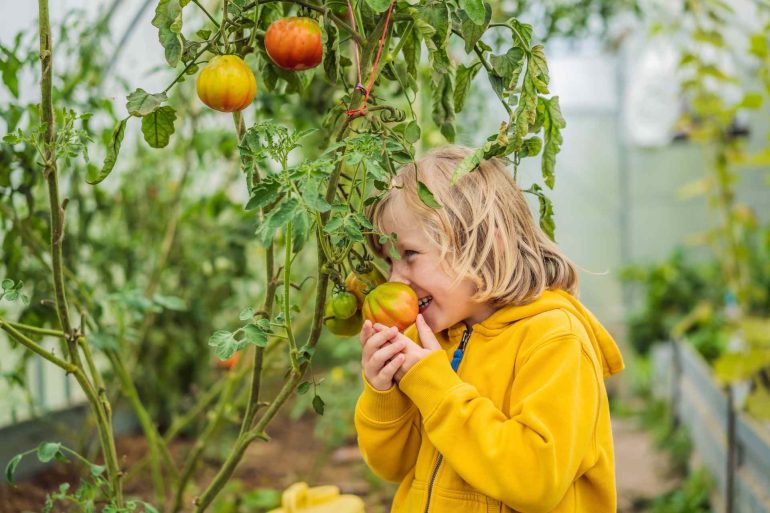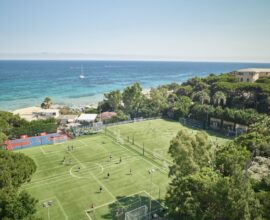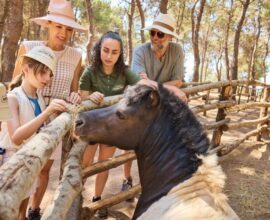A sustainable diet for children: how to explain the environmental impact of food to little ones?
Sustainable diet and children: how to educate them to sustainability starting with their meals
How to get children to understand the importance of sustainable nutrition for their health and the well-being of the planet.
Today more than ever it is important to change lifestyles and habits in favour of environmental sustainability to preserve our health and the planet’s well-being.
In this perspective, a key role is played by food education for the new generations to raise them into adults that, tomorrow, will be able to take care of the ecosystem.
Suffice it to say that, in today’s society, the production and consumption of food have a high impact on the environment due to the (wrong) predilection for animal proteins and fats as opposed to vegetable ones.
“Carbon footprint” indicates how much the processing of each product pollutes based on greenhouse gas emissions, water consumed and land occupied.
According to data from Our World in Data, producing a kilo of beef involves the emission of as much as 60 kilos of carbon dioxide into the atmosphere while a kilo of vegetable proteins (legumes, for example) emits only 0.80 kilos.
It becomes clear how sustainable nutrition is essential to reduce the impact on the environment and, at the same time, stay healthy thanks to the contribution of the correct nutrients.
But when can food be defined as “sustainable”?
First of all, it must be obtained with a low environmental impact: low nitrogen and carbon emissions, low land and water consumption.
Then, it must respect biodiversity and ecosystems, enhance the traditions and peculiarities of the place of production, and be healthy and affordable for all.
Food sustainability explained to children
After understanding the importance and urgency of food sustainability and what we talk about when we say “sustainable food”, let’s see how to educate children starting from their meals.
Limit purchases and reduce waste
Proper food management begins with the drafting of the shopping list: buying only what you really need in order not to promote massive production and help avoid throwing away precious food because it has expired.
The leftovers of the previous day shouldn’t be thrown away, they can be transformed and become the ingredients of a new dish to be prepared together.
Propose environmentally friendly foods
Children must be able to understand that not all foods are made the same and that some favour the well-being and preservation of the planet’s resources more than others.
Compose with them the weekly menu taking into account three parameters:
- Production: as already mentioned, foods of plant origin, in addition to being healthier, are also more sustainable;
- Seasonality: prefer fresh and seasonal products that meet the specific needs of the body at that precise moment and protect biodiversity;
- Territoriality: the more a product travels, the more it has a negative impact on the environment.
Try, then, to stock up at local markets, and farms close to home, and consider the idea of joining the GAS (Solidarity Purchasing Groups) that unite more people who place orders directly from producers by shortening the supply chain and cutting intermediaries.
Cooking together
Shopping together is educational for children just like preparing meals at home avoiding ready meals and snacks rich in fats and additives.
In this way, the little ones will be able to get to know the ingredients up close, how to cook a dish, make pasta by hand and clean fruit and vegetables, all to the benefit of health, creativity and positive interaction with parents.
Take them to visit a petting zoo
Today’s children often have no idea what’s behind the food they see on supermarket shelves, especially if they live in cities.
Taking them to the countryside, to visit an educational farm, will be an exciting and enriching experience as they will be able to see up close the animals, fruit trees, and vegetables in the garden and watch the processing of products.
The educational garden of Forte Village, discovering the crops of Sardinia
In one of the most magical corners of the south coast of Sardinia, where the sea is turquoise and the beaches are white, the little guests of the award-winning Forte Village resort have the opportunity to visit the educational garden and to learn, guided by a specialised gardener, about the typical crops of Sardinia.
This a unique opportunity for all children who, in this way, approach a new and different type of vegetation compared to those of their regions (or nations) of origin.
The educational workshop, inserted within the Children’s Wonderland and open to guests aged 3 and up, becomes a precious moment of socialisation and conscious discovery of nature: children can learn what it means to take care of plants and the basics of gardening.
Would you like to give your children the engaging experience of the educational garden and enjoy a fabulous holiday in an authentic paradise? Discover Forte Village Resort in Sardinia






